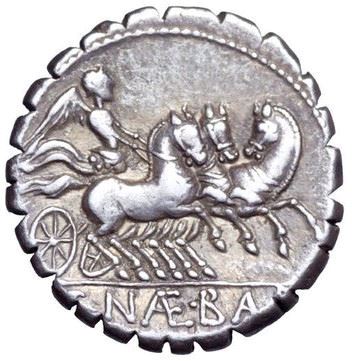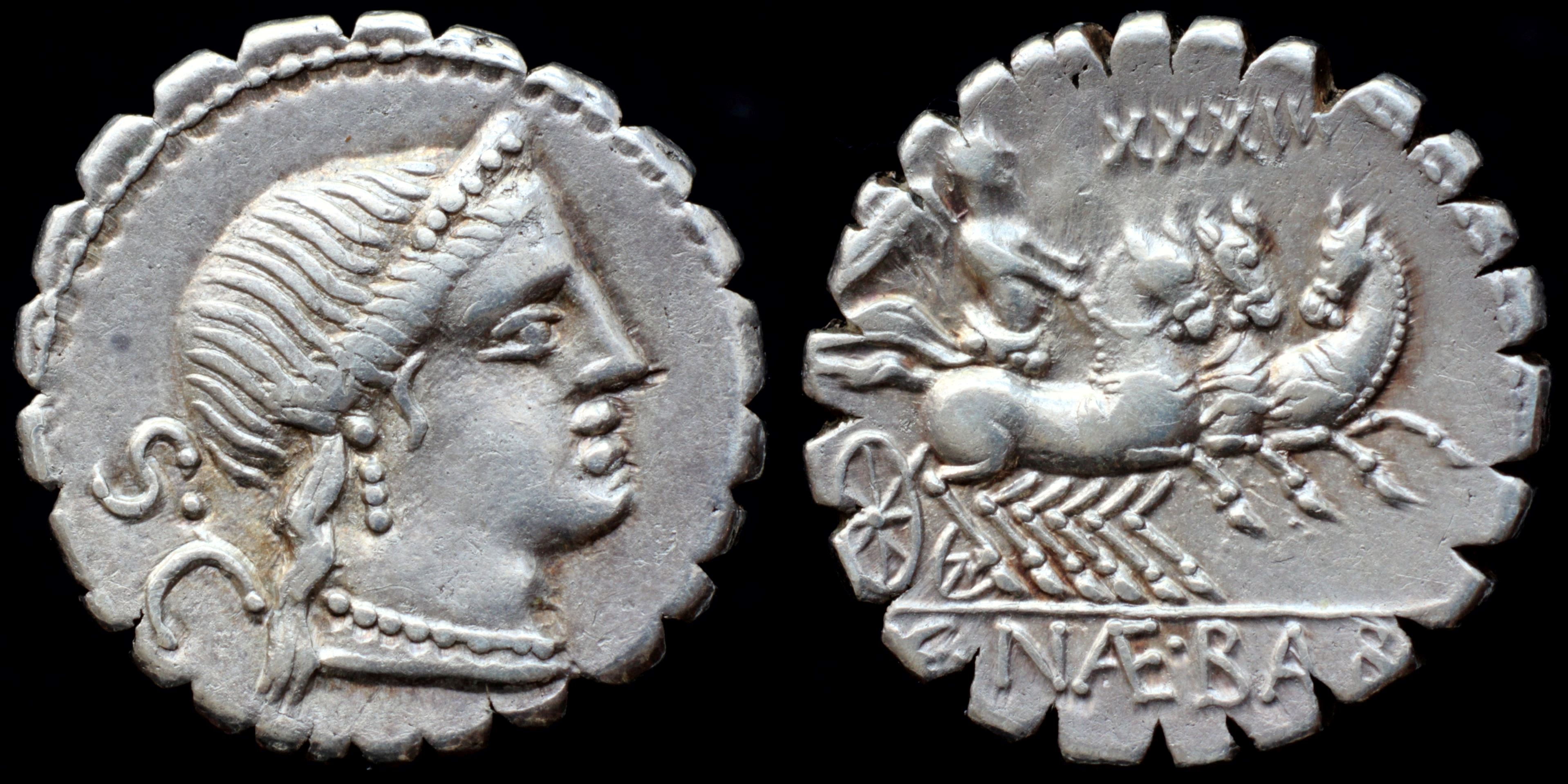C. Naevius Balbus. was one of the moneyers of the year 79 BC. He is not otherwise known.
Gens Naevia, occasionally written Navia, was a plebeian or patrician family at Rome. Members of this gens are first mentioned at the time of the Second Punic War, but the first of the Naevii to obtain the consulship was Lucius Naevius Surdinus, in AD 30.
In the time of the Republic, the principal cognomina of the Naevii were Balbus and Matho. Balbus, a common surname, originally signified one who stammers. Chase regarded Matho as a borrowing of the Greek Μαθων.
Gens Naevia, occasionally written Navia, was a plebeian or patrician family at Rome. Members of this gens are first mentioned at the time of the Second Punic War, but the first of the Naevii to obtain the consulship was Lucius Naevius Surdinus, in AD 30.
In the time of the Republic, the principal cognomina of the Naevii were Balbus and Matho. Balbus, a common surname, originally signified one who stammers. Chase regarded Matho as a borrowing of the Greek Μαθων.


An
AR
Denarius Serratus
struck 79 BC
in
Sardinia
Obverse: diademed head of Venus right; S·C
Reverse: Victory right in triga holding reins; XXXIII / C·N(AE)·B(AL)B
Diameter:
17 mm
Die Orientation: -
Weight: 3.9 g
Die Orientation: -
Weight: 3.9 g
ex Naumann
ex Forum Ancient Coins
Crawford 382/1b, SRCV I 309, RSC I Naevia 6, Sydenham 769b, BMCRR Rome 2937 var. (XXXIIII)
_2.jpg)
An
AR
Denarius Serratus
struck 79 BC
in
Rome
Obverse: Diademed head of Venus right; SC behind, E below chin
Reverse: Victory in triga right; C NÆ BALB in exergue
Diameter:
19 mm
Die Orientation: 5 H
Weight: 3.91 g
Die Orientation: 5 H
Weight: 3.91 g
According to Sear, this type was part of a large output of coinage specially authorised by decree of the Senate, and likely necessitated by the extensive military operations during the dictatorship of Sulla. The moneyer, C. Naevius Balbus, was a keen supporter of Sulla, and the coin was likely minted in commemoration of the dictators victory over Mithridates VI of Pontus around six years earlier. Interestingly, the surname Balbus apparently signified one who stammers. The coin obverse features Venus, who was the patron deity of Sulla. The reverse features a three-horse chariot (a ‘triga’), which was fairly uncommon on the Republican coinage...the two-horse ‘biga’ or four-horse ‘quadriga’ being portrayed on many more types. The coin has a serrated edge, which was fairly common on Republican coins during this period. The purpose of the serration has been debated by scholars. Some have suggested it may have served a practical purpose such as forgery prevention. More recently it has been put forward, tentatively, that the serrated edges were purely a decorative feature.
RSC Naevia 6b; Crawford 382/1A; Sear 309
